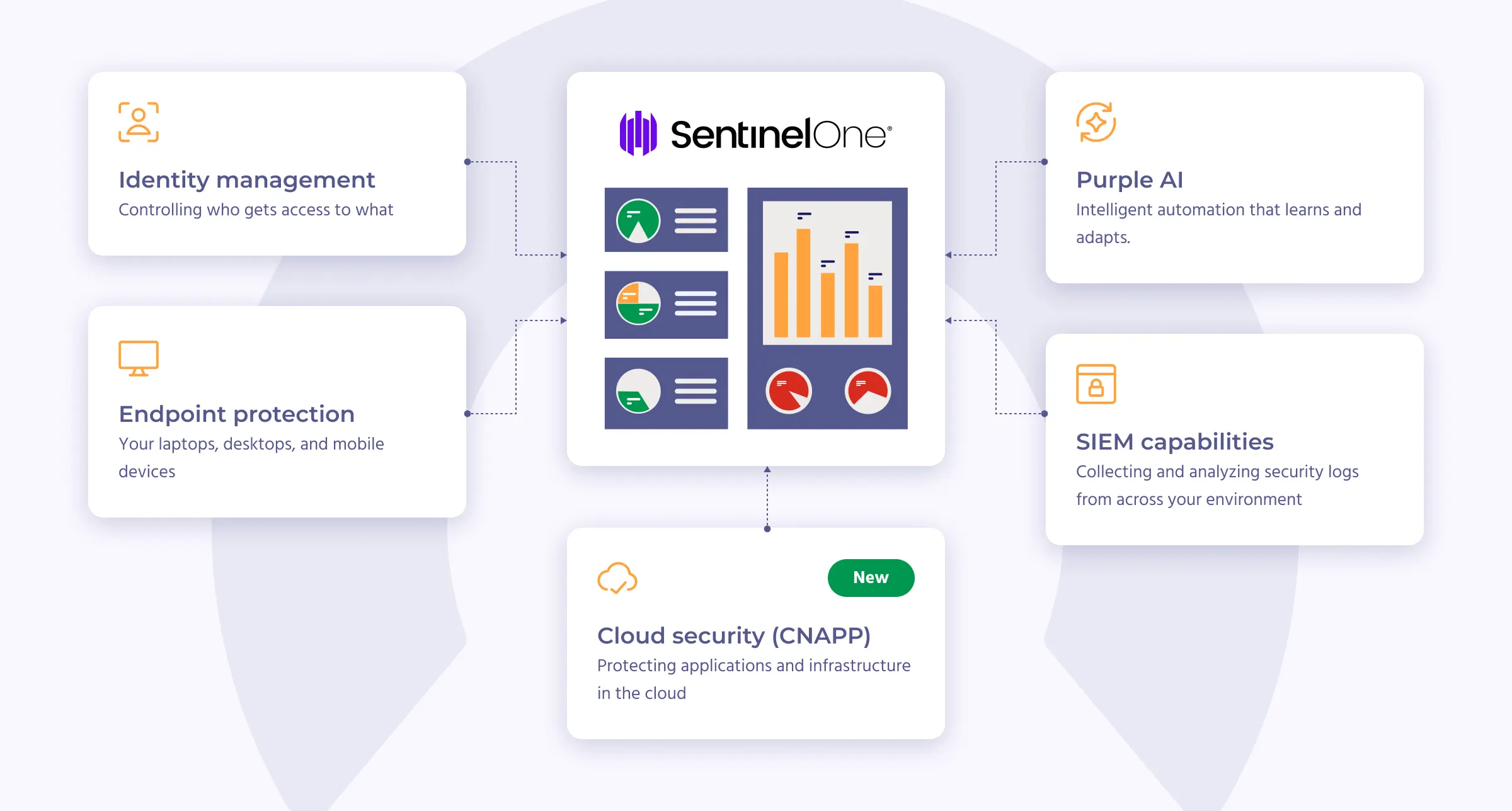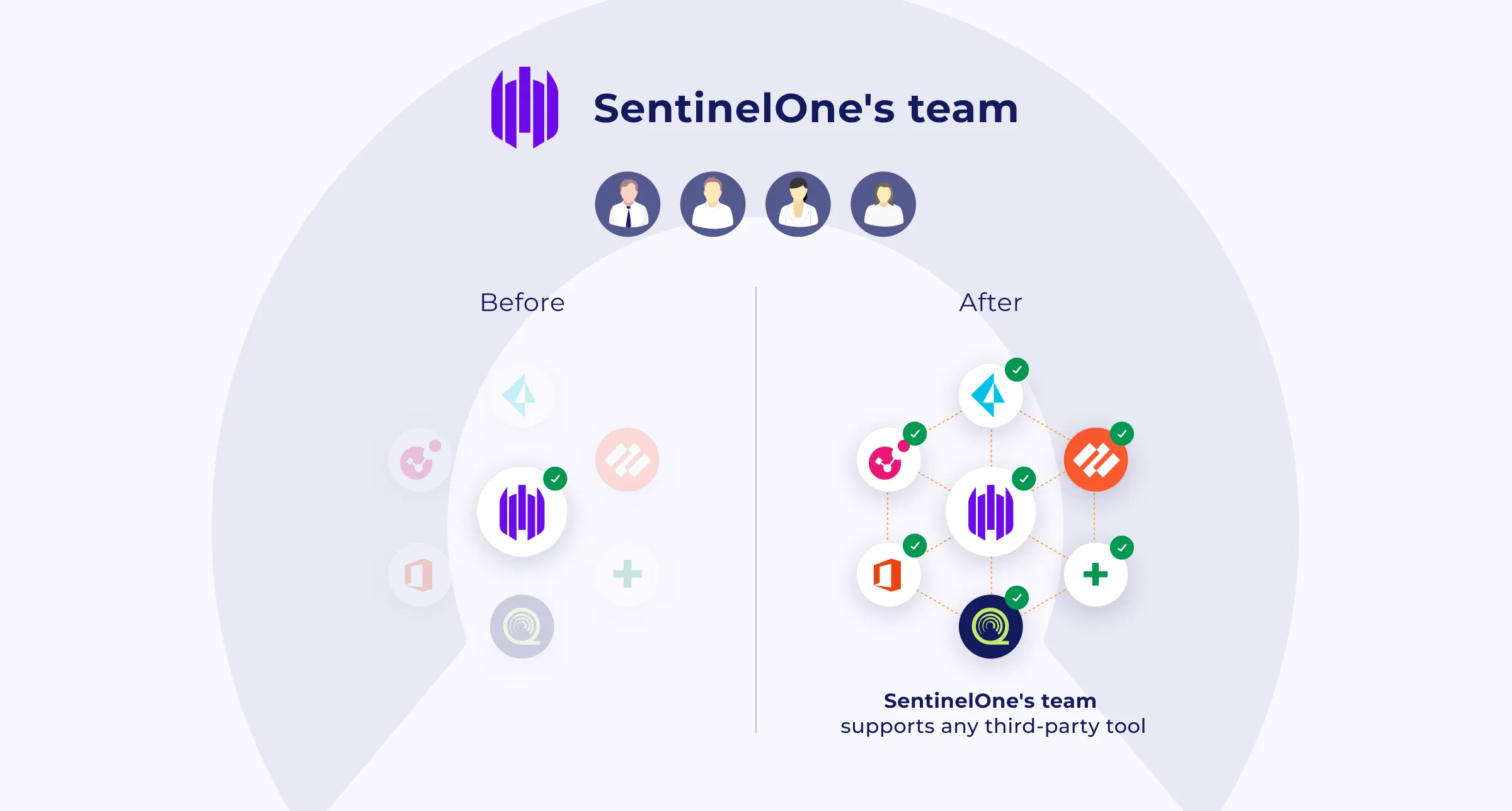SentinelOne, a leading cybersecurity company known for its AI-powered endpoint protection platform, just dropped its Q2 2025 updates. These enhancements focus heavily on automation — which makes sense since cybersecurity incidents are growing by about 30% every year.
Here’s what SentinelOne brought to the table:
- Unified CNAPP is finally complete — one dashboard for incidents across your entire cybersecurity toolkit, now including cloud environments.
- Smarter threat detection — vulnerability prioritization that focuses on threats that matter.
- Enhanced MDR services — professional security monitoring that now covers third-party tools too.
- Purple AI Athena — an agentic AI platform that extends Purple AI into external security ecosystems
Let’s break down what each of these updates means for your day-to-day work.
Unified CNAPP: All Your Security Tools, One Interface
According to Microsoft’s research, the typical enterprise uses as many as 80 individual tools in its security portfolio, constantly switching between dashboards.
SentinelOne’s answer? Pack everything into one unified interface. This quarter, they’ve made it even better by extending support to cloud environments.
Here’s what you can now manage from a single dashboard:
- Endpoint protection – your laptops, desktops, and mobile devices.
- Identity management – controlling who gets access to what.
- 🆕 Cloud security (CNAPP) – protecting applications and infrastructure in the cloud.
- SIEM capabilities – collecting and analyzing security logs from across your environment.
- Purple AI – intelligent automation that learns and adapts.
No more logging into different systems to piece together what’s actually happening in your network. Whether you’re securing office computers or cloud servers in AWS and Azure, the same smart automation works everywhere.
Smarter Threat Detection
The vulnerability prioritization got a major upgrade. Instead of just following generic threat lists (like Mandiant) that treat all vulnerabilities equally, it now considers real attacks happening in the wild and aligns with SentinelOne’s own attack simulation engine.
In simpler terms, you’ll spend time fixing the vulnerabilities that hackers are actually exploiting right now, not just the ones that look scary on paper but haven’t been used in attacks for years. It’s the difference between preparing for the threats you might face versus the threats you will face.
They’ve also added visual mapping for security events, making it easier to see how different incidents connect. Think of it as a family tree for cyber threats – you can now see how one suspicious email led to a compromised account, which then led to unauthorized file access. These connections often reveal the full scope of an attack that might otherwise look like isolated incidents.
MDR Services Level Up
Here’s where things get really interesting for managed detection and response (MDR) customers. If you’re not familiar with MDR, it’s basically having a team of security experts monitor your systems 24/7 and investigate suspicious activity.
Starting in May 2025, Extended MDR users get automatic alert analysis – even for third-party security tools. So, now you can set up detection on your Palo Alto firewall or enable monitoring on your Office 365 environment — SentinelOne’s team will investigate those alerts for you.
This is huge because most organizations use security tools from multiple vendors. Previously, you might have SentinelOne analyzing threats from their endpoint protection, but handling firewall alerts yourself. Now, their experts look at everything, giving you comprehensive coverage.
Even basic Vigilance MDR customers benefit from these updates. They can now feed Windows Event Logs into the system, and if something triggers an alert, the MDR team investigates, even using tools outside SentinelOne’s ecosystem.
Purple AI: Major Brain Upgrade
In 2023, SentinelOne launched Purple AI — an intelligent automation system that learns from security analyst actions and turns them into automated workflows. Now, at RSA Conference 2025, they introduced Purple AI Athena, the first agentic AI platform for cybersecurity operations. With Athena, security teams can extend Purple AI into external security ecosystems like existing SIEMs, cloud security lakes, or telemetry feeds without restructuring their tech stacks.
What sets Athena apart from typical automation tools is its ability to reason through complex scenarios. Instead of following rigid if-then rules, it adapts its response based on context, much like a human analyst would.
Conclusion
SentinelOne’s Q2 2025 updates tackle the core challenge facing IT teams today: managing an increasingly complex security landscape with limited resources. By consolidating tools into one interface, automating threat prioritization, and extending professional monitoring to third-party systems, these updates translate into fewer headaches and effective protection.
For IT teams already stretched thin, this could be the difference between staying ahead of threats and constantly playing catch-up.




